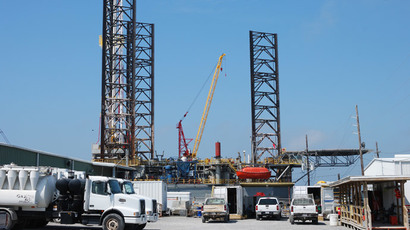US to become oil independent by 2037 – EIA

US may stop importing oil by 2037 as abundant domestic crude supplies, including North Dakota’s Bakken field and Texas’s Eagle Ford formation, may push production to the level of consumption, according to the US government.
The US Energy Department’s branch that collects and analyzes data - the Energy Information Administration (EIA) says that within 23 years the world's largest economy may become energy independent, while demand for crude is expected to be modest.
“This is the first time the Annual Energy Outlook has projected that net imports’ share of liquid fuels consumption could reach zero,” Bloomberg quotes John Krohn a spokesman for the EIA.
The most optimistic assessment by the EIA assumes that production will increase to about 13 million barrels a day over the next two decades. The projection is based on more favorable assumptions relating to technological improvements and the productivity of wells.

Net oil imports have already fallen to about 5 million barrels a day from a peak of almost 13 million barrels in 2006. The shift is mostly due to advances in techniques such as hydraulic fracturing and horizontal drilling into shale rock.
The EIA also calculated a low resource scenario. According to estimates, after the moderate growth of up to 9.1 million barrels a day in 2017 the production of oil may nosedive to 6.6 million barrels a day by 2040. In the worst-case scenario in terms of imports the EIA assessed the net import share of petroleum and other liquids to fall to 25 percent in 2016 and then again rise up to 32 percent in 2040.
However, experts say estimating oil production, especially until 2040 is a very tricky business as the assessment factors are too variable. The forecasters must make a number of guesses, including the size of oil reserves lying thousands of feet underground, how quickly technology advances, and whether a rise in oil prices can make resources once too costly to produce suddenly become economic.
“Ten years ago we were importing natural gas, and now we’re looking at exports. The changes have, over the last few years, been dramatic and there’s really no way to predict things more than a couple of years in advance,” Bloomberg quotes Stephen Schork, president of Schork Group Inc., a consulting group in Villanova, Pennsylvania.














